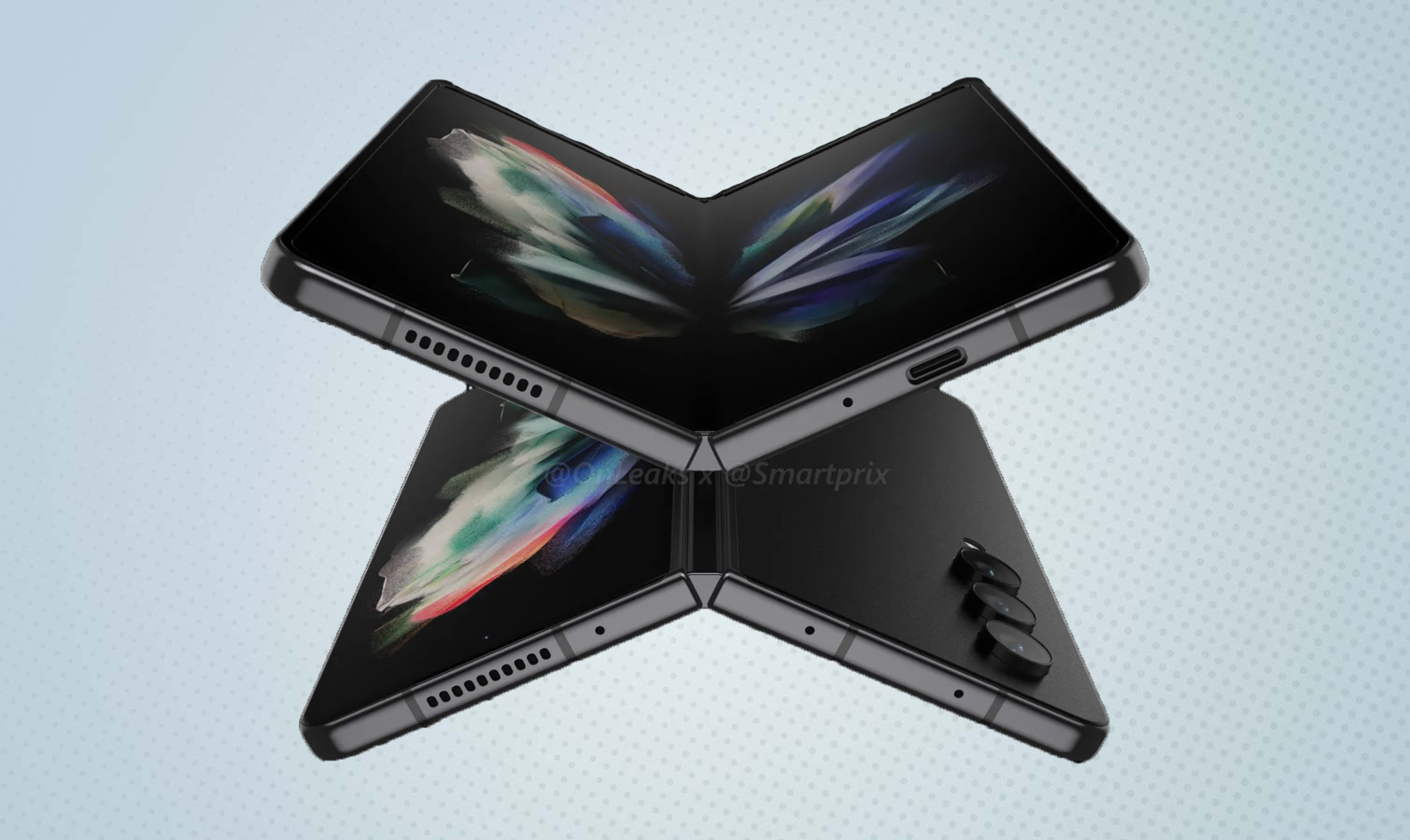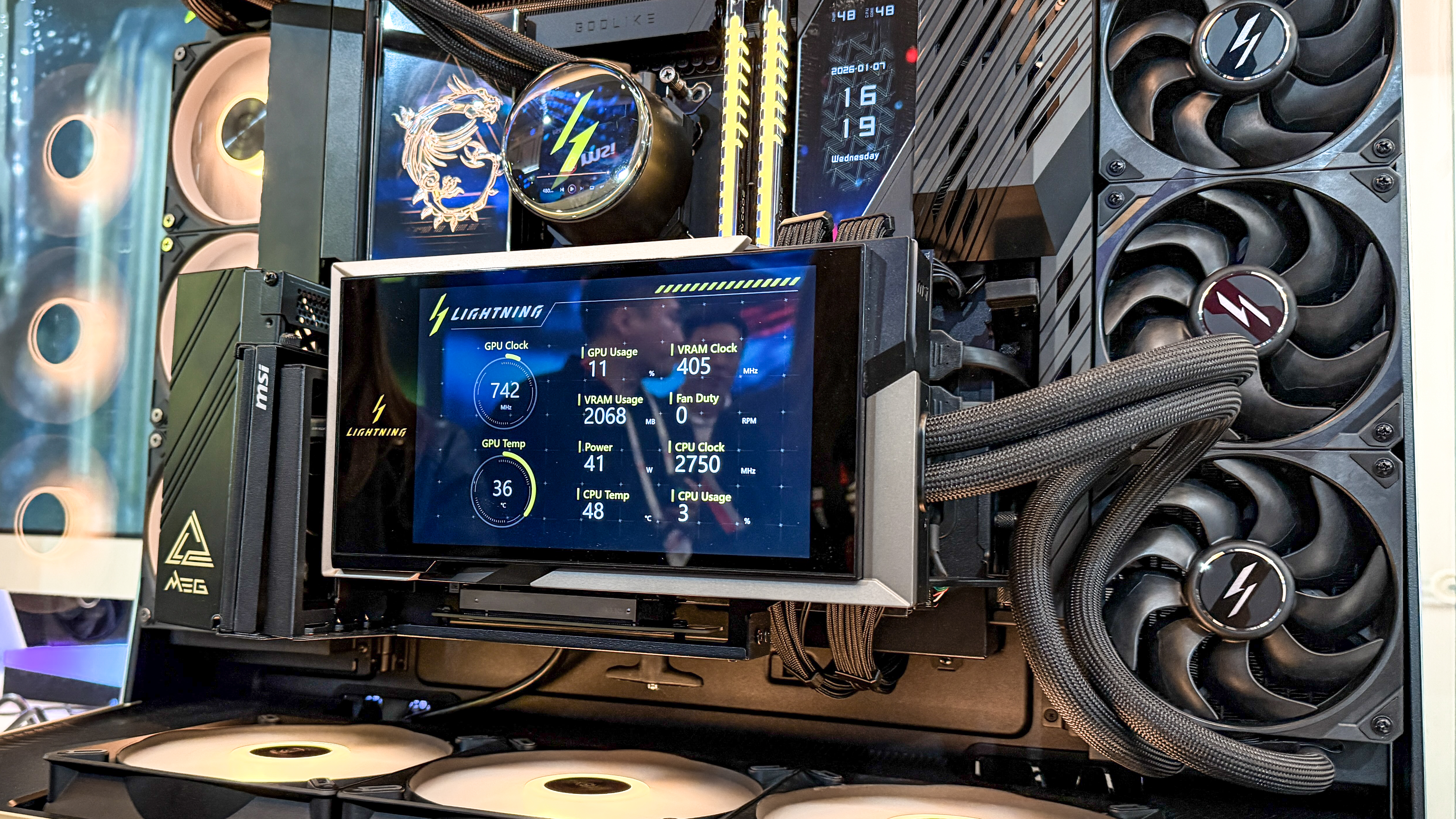Samsung Galaxy Z Fold 4 could be an absolute powerhouse — here’s why
What the Asus ROG Phone 6 Pro tells us about Samsung's upcoming foldables

There's reason to be excited about the Galaxy Z Fold 4 and Galaxy Z Flip 4, Samsung's rumored foldable phones that we're expecting to see launch toward the end of summer. And it's a newly unveiled gaming phone that's the reason for the buzz.
Asus just took the wraps off the ROG Phone 6 Pro, a new handset built with gamers in mind. We've already posted our Asus ROG Phone 6 Pro review and found it to be one of the best gaming phones we've seen. A big reason why is the performance delivered by the new phone's Snapdragon 8 Plus Gen 1 chipset.
So how does that impact the Galaxy Z Fold 4 and Galaxy Z Flip 4? Because those two phones are also rumored to feature Qualcomm's latest silicon. And our ROG Phone 6 Pro tests gave us the first chance to see Snapdragon 8 Plus Gen 1 in action.
Qualcomm talked up the new chipset's improved power management features when it unveiled the Snapdragon 8 Plus Gen 1 in May. The updated silicon promises a 15% improvement to overall power efficiency from the Snapdragon 8 Gen 1 system-on-chip that powered many of the best Android phones to ship earlier in 2022. But performance gains are part of the picture, too, with Qualcomm pointing to 10% improvements for both the CPU and GPU of the Snapdragon 8 Plus Gen 1.
What the ROG Phone 6 Pro tips about Galaxy Z Fold 4 performance
Those benefits were clearly on display when we ran some synthetic benchmarks on the ROG Phone 6 Pro. On Geekbench 5, which measures overall performance, the ROG Phone 6 Pro posted single- and multicore scores of 1,316 and 4,197, respectively. Those results were 6% and 24% over the respective results we got when we tested the Samsung Galaxy S22 Ultra, which is powered by the Snapdragon 8 Gen 1.
We also saw better graphics scores on the ROG Phone 6 Pro, using 3DMark's Wild Life Unlimited Extreme test. There, the Asus phone hit 66 frames per second compared to a little less than 60 fps for the S22 Ultra.
| Row 0 - Cell 0 | Asus ROG Phone 6 Pro | Galaxy S22 Ultra | iPhone 13 Pro Max |
| Processor | Snapdragon 8 Plus Gen 1 | Snapdragon 8 Gen 1 | A15 Bionic |
| Geekbench 5 single-core | 1,316 | 1,240 | 1,720 |
| Geek bench 5 multicore | 4,197 | 3,392 | 4,549 |
| 3DMark Wild Life Unlimited | 66 fps | 59.8 fps | 68 fps |
The caveat here is that Asus loads up the ROG Phone 6 Pro with RAM — 18GB of memory, in fact — and that's going to inflate some of those scores a bit, especially the multicore result on Geekbench 5. Still, it's pretty clear that Snapdragon 8 Plus Gen 1 phones are going to outperform the Snapdragon 8 Gen 1-powered models — and those phones weren't exactly laggards.
Get instant access to breaking news, the hottest reviews, great deals and helpful tips.
More significantly, the ROG Phone 6 Pro's results aren't too far off from what the A15 Bionic inside the iPhone 13 models can produce. The A15 Bionic remains the performance king, with the iPhone 13 Pro Max producing Geekbench results of 1,720 for the single-core test and a 4,549 multicore score. But the ROG Phone 6 Pro isn't as behind those results as Samsung's Galaxy S22 lineup turned out to be.
This fall, Apple will reportedly stick with the A15 for its iPhone 14 and iPhone 14 Max models. The iPhone 14 Pro, in contrast, will get a more powerful A16 Bionic chip, according to rumors. As a result, we wouldn't expect any gap between Apple's iPhones and Snapdragon 8 Plus Gen 1 phones like the Galaxy Z Fold 4 to widen.
Galaxy Z Fold 4 and Galaxy Z Flip 4 rumors
Prior to the ROG Phone 6 Pro's release, we already had some indication of a performance boost for Snapdragon 8 Plus Gen 1-powered phones. Leaked Galaxy Z Fold 4 benchmarks from last month promised 12% gains over the Galaxy S22 Ultra's Geekbench 5 multicore score. (The sizable chunk of RAM in the ROG Phone 6 Pro likely accounts for that phone's bigger jump compared to the leaked results.)
Similarly, earlier leaked benchmarks purportedly showing Galaxy Z Flip 4 performance hinted at improved Geekbench scores from what we've seen with Snapdragon 8 Gen 1-powered phones.
The new Snapdragon 8 Plus Gen 1 chipset tops the list of rumored Galaxy Z Fold 4 features as well as Galaxy Z Flip 4 features, but they're not the only things likely to change with Samsung's foldable phones. Samsung is reportedly turning to a different hinge for both phones that would make the new models more portable. The creases that appear where the screens fold in two could also be less visible in the upcoming models. A 50MP main camera has also been tipped for the Galaxy Z Fold 4, which could give it a significant photography boost.
We're still waiting to see if Samsung can do anything to improve the battery life on the Fold and Flip, which has been a glaring weak spot on two of the best foldable phones. And it will be interesting to see if Samsung can do anything about the phones' prices — at $1,799, the Galaxy Z Fold 3 is one of the most expensive phones you can buy, while the Galaxy Z Flip 3 was the first foldable to cost less than $1,000.
We could find out Samsung's plans in about a month. Both the Galaxy Z Fold 4 and Galaxy Z Flip 4 could be unveiled at an August Unpacked event. And it's then we'll find out if they can live up to the performance expectations that the ROG Phone 6 Pro just set.
Philip Michaels is a Managing Editor at Tom's Guide. He's been covering personal technology since 1999 and was in the building when Steve Jobs showed off the iPhone for the first time. He's been evaluating smartphones since that first iPhone debuted in 2007, and he's been following phone carriers and smartphone plans since 2015. He has strong opinions about Apple, the Oakland Athletics, old movies and proper butchery techniques. Follow him at @PhilipMichaels.
 Club Benefits
Club Benefits






